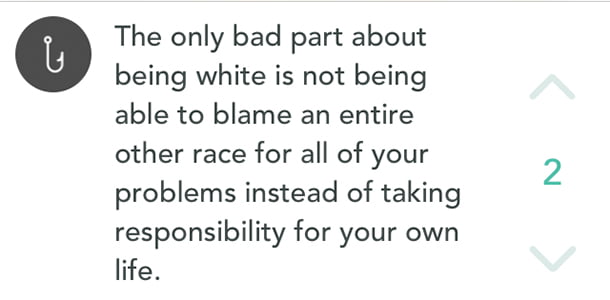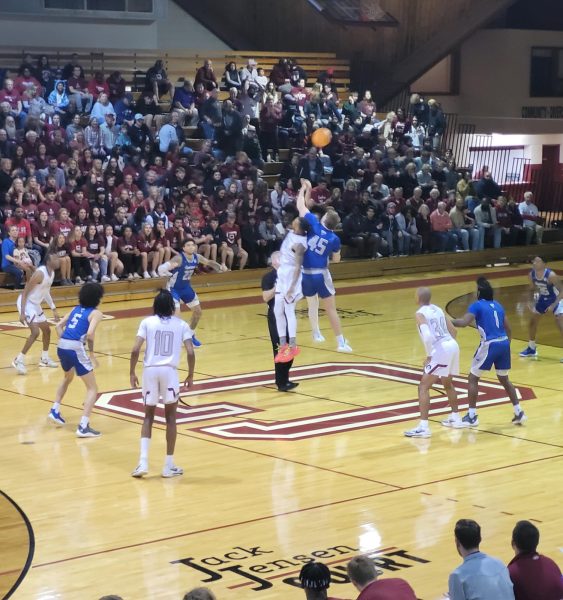White supremacy: still the problem
White supremacy and racism is rampant at Guilford. That’s a fact, not an opinion, but white people on campus seem to be surprised by it.
People of color have been experiencing and fighting white supremacy and racism at Guilford since its beginning. White people, on the other hand, have been ignorant and silent, thus actively contributing to it.
Guilford cannot say we are upholding our core values such as diversity, equality or justice while white supremacy is being upheld and perpetuated on this campus.
On Nov. 12 at 1:00 p.m., a walkout was organized and staged by students of color and their allies. The rally was to stand in solidarity with the students of the University of Missouri and stand up against racial injustice at Guilford.
A group of students also presented a list of demands for the administration.
President Jane Fernandes held two forums the next day in response to the walkout. The forums intended to give the community an opportunity to share their concerns about racism at Guilford with Fernandes and administrators.
The quick turnaround appeared to be the result of an urgency to quiet and appease those who were speaking out rather than a real acknowledgement of the issues of racism and white supremacy at Guilford.
“A small conversation about race is not going to allow me to feel like my life matters,” said junior and co-organizer of Black Lives Matter Week Brandee Craig. “A small conversation reminds me that, once again, I do not matter and I need to be silenced.”
Students of color experience racism at all levels of this institution including from their professors, often in the form of ignorant questions or jokes.
I have heard countless stories of anti-black racism by white that at times involved threats of physical violence.
The school plasters the faces of students of color all over countless promotional materials and our website to create an illusion of diversity and inclusivity in our predominantly white institution.
Meanwhile, I have heard many students describe coming to Guilford because of the promise of diversity and feeling tricked and disappointed finding that it is not inclusive.
It is International Education Week at Guilford, so the cafeteria’s menu includes food from all over the world. While six European countries were mentioned, the entire continent of Africa was not mentioned once.
Following the lecture by Patrisse Cullors, the co-founder of the Black Lives Matter movement, in Dana Auditorium on Oct. 26, members of the community posted racist and white supremacist remarks on the social media app Yik Yak.
“I see the app as a way to know the reality of the campus — and the reality is harsh,” said senior and co-organizer of Black Lives Matter Week Teresa Bedzigui.
“There have been calls for a KKK rally on campus and threats about the South rising again and white power. All that is very scary for a person of color on this campus, especially knowing the history of Greensboro and the Massacre.”
Bedzigui and Craig invited Cullors to speak as part of one of many events they organized for Black Lives Matter Week at Guilford held the week of Oct. 26.
Shortly after, Guilford made a promotional video about the event in which neither of the two student organizers, who are both women of color, were mentioned or given credit for their efforts.
White domination is nothing new at Guilford, in the U.S. or in the world. White people are socialized to be racist, but it is possible for us to resist and fight our own racism.
We are the reason for white supremacy and therefore we also must be part of dismantling it. This is not a problem for people of color to fix on their own.
Discussions open to the community are a step in the right direction, but not the solution that the administration seems to think it will be.
“The transformation of this institution will have to include a willingness to address and resist oppression in all forms: capitalism, colonialism, cissexism, sexism, classism, heterosexism, racism, able-bodyism, patriarchy, etc.,” said Parker Hurley, the LGBTQQA coordinator of the Multicultural Education Department.
“And resist the urge to go on business as usual and employing the same strategies of yesteryears.”
The work that needs to be done involves a shift in mindset. We must realize that addressing and fighting the way whiteness harms people of color is an ongoing and constant process.
The administration needs to be involved through not only listening to the community, but also putting added systems of institutional support in place for people of color.
Most crucial to dismantling white supremacy at Guilford is centering lives of color and decentering white lives at all levels. White people will and should feel discomfort throughout this entire process and that’s okay.











